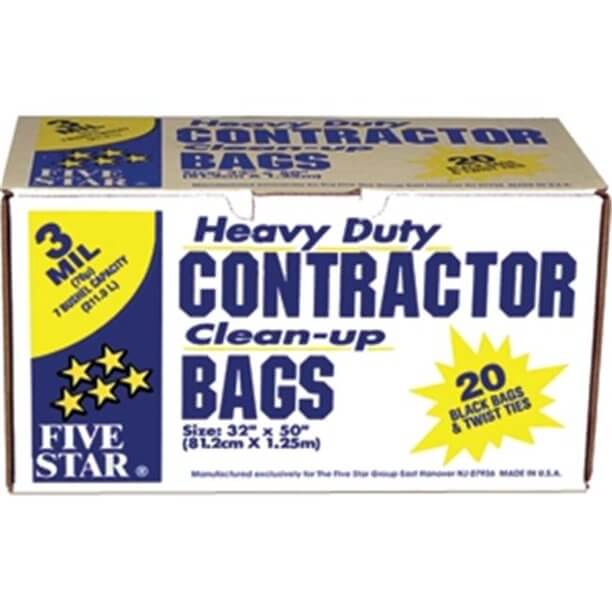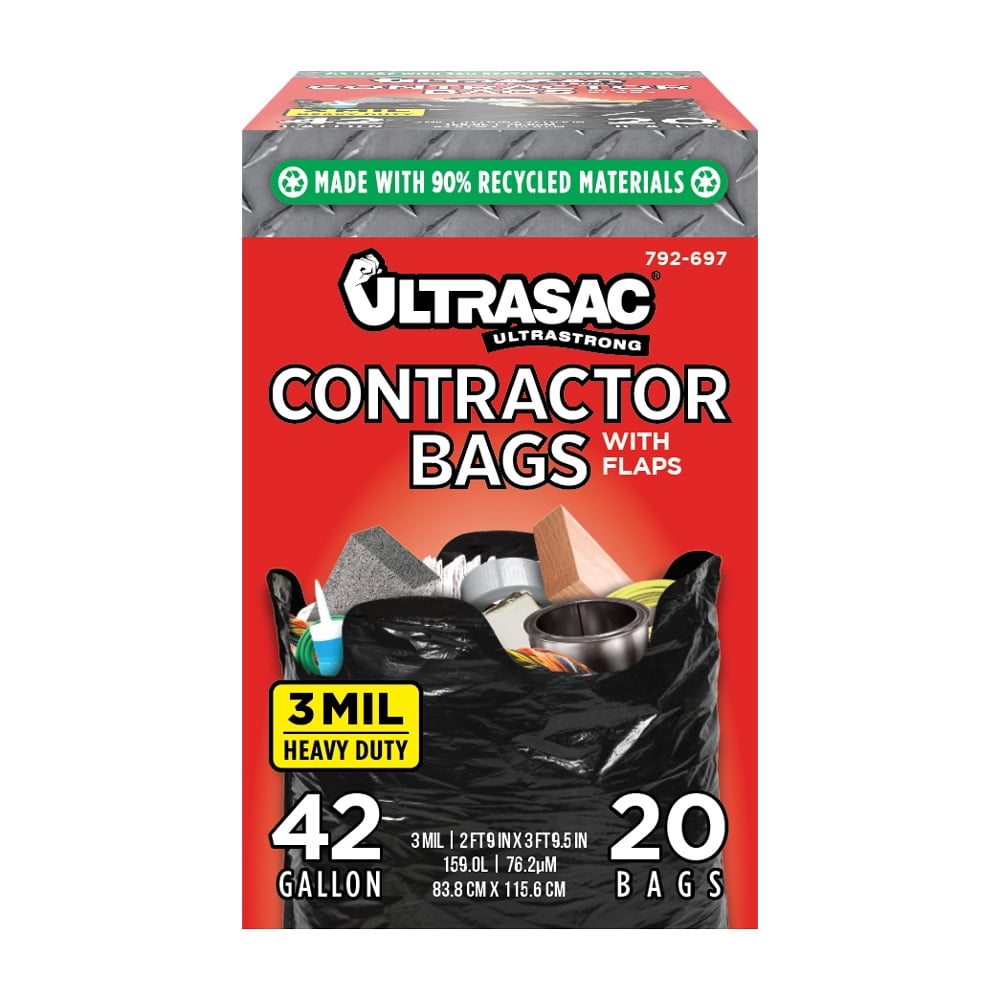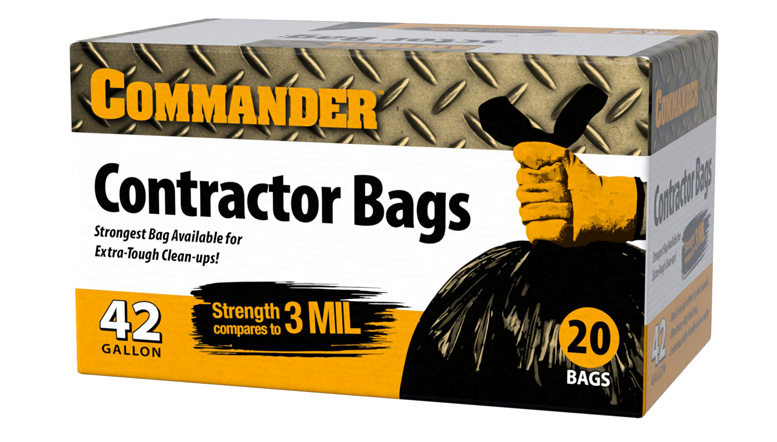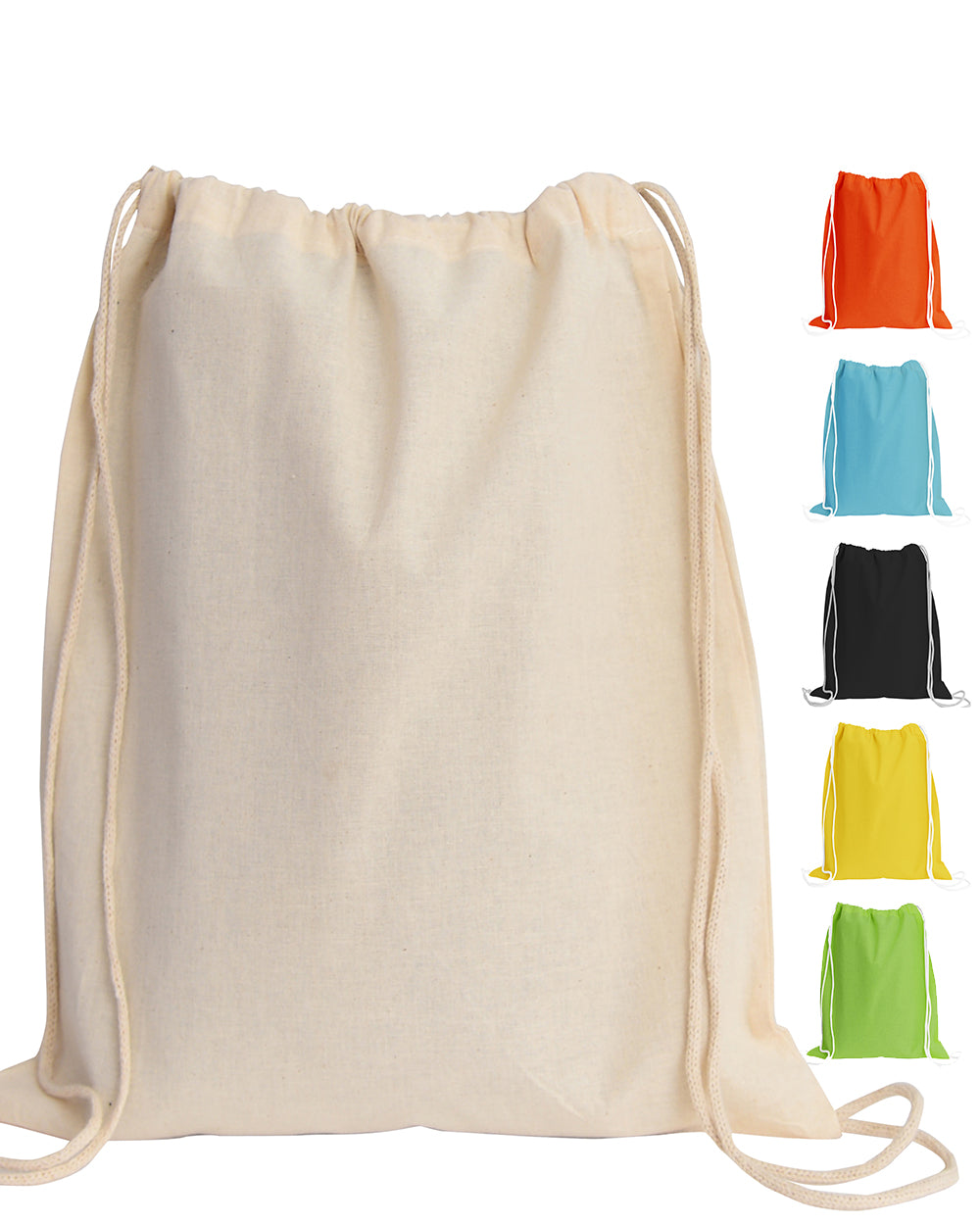Contractor bags are heavy-duty sacks made from thick, puncture-resistant plastic, designed for construction debris, yard waste, and demanding cleanups.


What Exactly Defines a Contractor Bag?
While often mistaken for simple, large trash bags, contractor bags are a distinct class of utility product engineered for resilience and performance under extreme stress. Unlike standard kitchen or office wastebasket liners, these industrial-strength bags are specifically designed to handle the sharp, heavy, and abrasive materials commonly found on job sites, in workshops, or during major cleanup projects. Their definition is rooted in three core attributes: superior material composition, significant thickness, and robust construction.

The primary purpose of a contractor bag is to provide a reliable containment solution that prevents catastrophic failures. A split seam or puncture from a piece of drywall, a sharp wood scrap, or a stray nail not only creates a mess but also poses a safety hazard and reflects poorly on a business’s attention to detail. Therefore, these bags are manufactured to a much higher standard, ensuring they can be filled to capacity with demanding debris and transported without the risk of tearing or bursting.
Key Characteristics: Material and Construction
The secret to their strength lies in the material. Most high-quality contractor bags are made from Low-Density Polyethylene (LDPE) or, more commonly, Linear Low-Density Polyethylene (LLDPE). This specific polymer is chosen for its excellent tensile strength and flexibility. LLDPE provides a superior ability to stretch under pressure without breaking, making it highly resistant to punctures and tears from sharp or irregular objects. This elasticity is what allows a bag to accommodate the jagged edge of a broken tile or a protruding screw without immediately failing.
Furthermore, the construction of the bag’s seal is critical. Many feature a reinforced flat seal or a gusseted seal. A flat seal provides a strong, straight bond across the bottom of the bag, while a gusseted seal has indented sides that expand, allowing the bag to conform more easily to bulky items and stand upright on its own when partially filled. Both designs are engineered to distribute weight evenly and eliminate the weak points that can cause standard bags to split under a heavy load.
Key Characteristics: Thickness (The Mil Measurement)
Perhaps the most critical specification for a contractor bag is its thickness, measured in mils. A mil is one-thousandth of an inch (0.001 inches). For comparison, a standard kitchen trash bag is typically between 0.7 and 0.9 mils thick. A “heavy-duty” consumer-grade bag might reach 1.5 mils.
Contractor bags, however, begin at around 2.0 mils and can go up to 6.0 mils or even more. This substantial increase in material provides a formidable barrier against punctures and tears. A 3.0 mil bag is often considered the industry standard for general construction cleanup, capable of handling everything from wood scraps and insulation to drywall and light demolition debris. Thicker bags, such as those in the 4.0 to 6.0 mil range, are reserved for the most demanding tasks, like containing broken concrete, sharp metal fragments, or roofing materials.
Key Characteristics: Superior Seals and Capacity
Beyond material and thickness, contractor bags are defined by their generous size and load-bearing capacity. Standard sizes often range from 42 gallons to 55 gallons or more, providing ample volume for significant cleanup tasks. This large capacity reduces the number of bags needed for a job, improving workflow efficiency. When combined with their robust construction, these bags can often hold 50 to 100 pounds of material or more, depending on the mil thickness and the nature of the debris. This strength ensures that your team can work confidently, without the constant worry of a bag failure slowing down progress.
Why Should Your Business Invest in Contractor Bags?
Opting for contractor-grade bags over standard alternatives is not an expense; it is an investment in operational integrity, safety, and professional reputation. For any business involved in physical work—be it construction, remodeling, landscaping, or property management—the tools and supplies used are a direct reflection of the company’s standards. Using an inferior bag that breaks on a client’s property is inefficient and deeply unprofessional.
Unmatched Durability and Puncture Resistance
The most immediate benefit is the sheer resilience of these bags. The combination of LLDPE material and significant mil thickness creates a product that can withstand the rigors of a true work environment. Your team can confidently dispose of sharp-edged wood, plaster, nails, glass shards, and abrasive materials without fear of the bag tearing. This eliminates the need for the inefficient and wasteful practice of “double-bagging,” a common necessity when using thinner, less reliable bags. A single contractor bag can do the job of two or even three standard bags, saving both materials and time.
Enhanced Safety and Job Site Professionalism
A clean and organized job site is a safe job site. Spilled debris from a broken trash bag can create trip-and-fall hazards, expose sharp objects, and require additional cleanup time. By reliably containing waste, contractor bags help maintain a safer work environment for your crew and anyone else on the property. Furthermore, presenting a clean, well-managed site to a client is crucial for maintaining a professional image. The small detail of using high-quality, durable bags demonstrates a commitment to quality and respect for the client’s property, reinforcing their decision to hire your business.
Increased Efficiency and Cost-Effectiveness
While the upfront cost per bag is higher than for standard liners, the long-term value is significantly greater. The time lost to cleaning up spills from failed bags, the cost of using multiple bags for a single task (double-bagging), and the potential for property damage all represent hidden costs associated with using inadequate supplies. A contractor bag’s reliability streamlines the cleanup process. Workers can fill each bag to its proper capacity, move it confidently, and complete the job faster. This operational efficiency translates directly into labor savings and allows your team to move on to the next task or project more quickly, ultimately boosting productivity and profitability.
How to Choose the Right Contractor Bag for Your Needs
Selecting the appropriate contractor bag requires a clear understanding of the task at hand. Choosing a bag that is too thin for the job can lead to failure, while choosing one that is excessively thick can be an unnecessary expense. The decision primarily hinges on two factors: the type of debris being handled, which dictates the required mil thickness, and the volume of waste, which determines the necessary bag size.
Understanding Mil Thickness: A Practical Reference
The mil thickness is the most important factor in matching a bag to its intended purpose. Using a simple reference can help your business standardize its purchasing and ensure teams always have the right tool for the job. A higher mil count provides greater protection against punctures and tears but also results in a less flexible and more expensive bag.
| Mil Thickness | Common Uses | Debris Type |
|---|---|---|
| 2.0 Mil | General cleanup, contractor-level yard waste, lighter job site debris. | Leaves, grass clippings, drywall dust, insulation, lightweight wood scraps. |
| 3.0 Mil | The industry standard for construction, remodeling, and demolition. | General construction debris, wood with nails, plaster, roofing shingles, small branches. |
| 4.0 Mil | Heavy-duty demolition, commercial applications, rough and sharp materials. | Broken glass, metal shards, abrasive materials, thicker wood, light aggregate. |
| 5.0 – 6.0 Mil | Extreme-duty industrial use, sharp and very heavy materials. | Broken concrete, rebar, sharp metal scrap, tile, stone, and other highly abrasive debris. |
Selecting the Correct Size and Capacity
After determining the necessary thickness, consider the volume of waste you anticipate. The most common sizes for contractor bags are 42 and 55 gallons. A 42-gallon bag is a versatile workhorse, large enough for most cleanup tasks without becoming unmanageably heavy when full. It’s an excellent choice for daily site maintenance and remodeling projects. For larger-scale demolition or extensive yard cleanups, a 55-gallon bag provides maximum capacity, reducing the total number of bags required. However, be mindful that a 55-gallon bag filled with dense material like soil or broken tile can become extremely heavy, potentially requiring two people to lift safely.
Common Applications Beyond the Construction Site
The utility of contractor bags extends far beyond traditional construction and demolition projects. Their exceptional strength and capacity make them an invaluable asset for a wide range of commercial and industrial applications where standard bags would quickly fail.
Landscaping and Heavy Yard Waste
For professional landscapers and avid gardeners, contractor bags are an ideal solution for yard waste. They easily handle thorny branches, wet leaves, heavy soil, and woody clippings that would shred consumer-grade lawn bags. Their puncture resistance means that sharp sticks and rose bush trimmings can be bagged without worry, streamlining cleanup after a major pruning or property clearing project. Their large capacity is also perfect for seasonal cleanups, accommodating vast amounts of fallen leaves or storm debris in fewer bags.
Commercial and Industrial Use
Businesses such as restaurants, event venues, and manufacturing facilities can also benefit greatly. In a commercial kitchen, these bags can handle heavy, wet food waste, broken glass, and bulky packaging. For event management, they are perfect for post-event cleanup, easily containing a mix of food waste, plastic bottles, and other refuse. In an industrial or warehouse setting, they are strong enough to hold scrap metal, packaging materials, and other tough operational byproducts, contributing to a cleaner and more organized workspace.
The Professional’s Toolkit: Investing in Durability
A professional’s commitment to quality is evident in the tools they choose. This principle applies to everything from their power drills to their cleanup supplies. Opting for a high-mil contractor bag is a decision to prioritize efficiency, safety, and a superior result. It signals an understanding that robust equipment is fundamental to excellent work. This same philosophy of investing in durability should extend to the personal gear a professional carries every day.
Just as a job site requires tough, reliable solutions for debris, a professional requires a bag that withstands the demands of their daily routine. For the contractor, project manager, or business owner who values resilience, a bag crafted from full-grain leather is the ultimate expression of this commitment. The Beld Tura Leather Duffel Bag is engineered not just for style, but for a lifetime of service. Constructed from the highest quality hides and fitted with solid brass hardware, it is designed to endure the rigors of travel and daily use, developing a unique patina that tells a story of a career built on excellence. It is the perfect companion for the professional who demands the best, from their job site tools to their personal effects.
Ultimately, whether you are selecting a bag for job site debris or a bag for your personal gear, the choice reflects your standards. Investing in heavy-duty, reliable products demonstrates a foresight that separates the amateur from the professional. It is an acknowledgment that quality equipment is not a cost, but a cornerstone of efficient, safe, and successful business operations.


